Ask educators what formal education is or what it should do, you’ll likely get a long list. But two that will likely appear in the lists produced by educators with teaching qualifications from reputed universities around the world are 1. it should impart skills (thinking and practical skills), and 2. educate students on or raise awareness in students about a range of different subjects and topics.
Unfortunately, education in Nepal fails the population miserably. To begin with, after the Rana oligarchs reserved education for only the hill so-called high caste Hindus for like a century, mostly males at that, the kind the country made available to the public for the last seven or so decades has failed to educate a vast majority of the population (see histograms below).
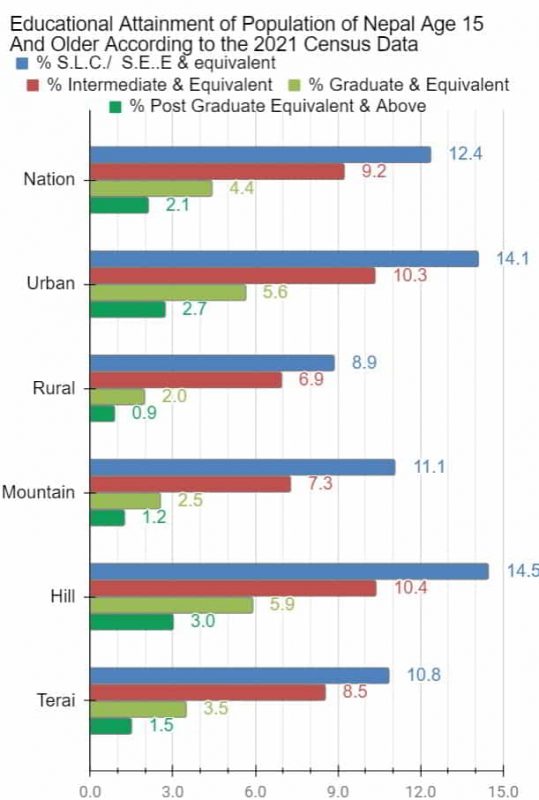
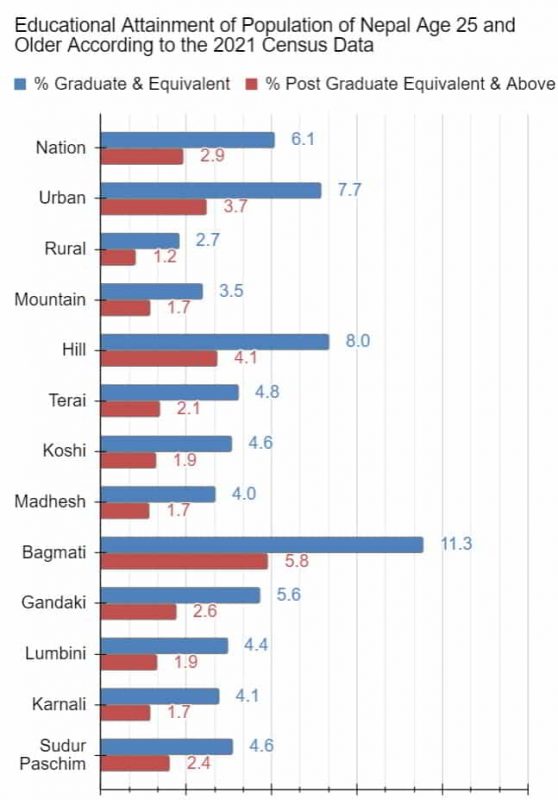
The level of education of the population is so low that only 9% (less than one-in-ten) of the adult population have advanced degrees (the second histogram above). (In the analysis, everyone with an advanced degree is assumed to be twenty-five or older, which is NOT true, of course.)
Furthermore, the quality of education the system provides is so poor that it neither sufficiently imparts crucial skills — whether thinking or practical — nor sufficiently raises awareness about critical subjects. Of the six thinking skills, it imparts only the most basic ones: recall and some understanding. As for educating the students about critical subjects — such as the insidious and pernicious monstrosity of the social system that’s been around in the Indian Subcontinent for over a thousand years — it essentially teaches the population to deny its existence and its devastating legacy.
About a year ago, helping my little nephew with his Social Studies homework, I decided I would have a closer look at the textbook to see if the caste system were part of the curriculum. Browsing the table of content (see images below), I decided that “lessons” 1-3 under “Unit 4” (text inside the red rectangle in the second image) might cover the topic.
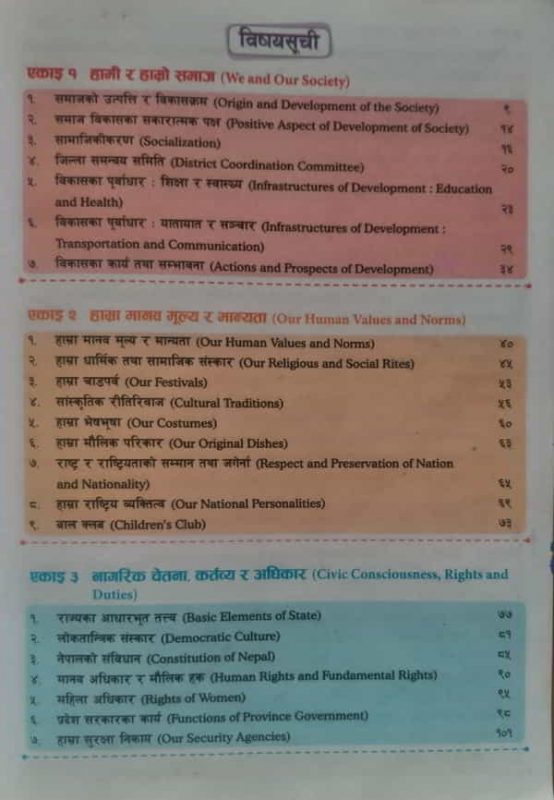
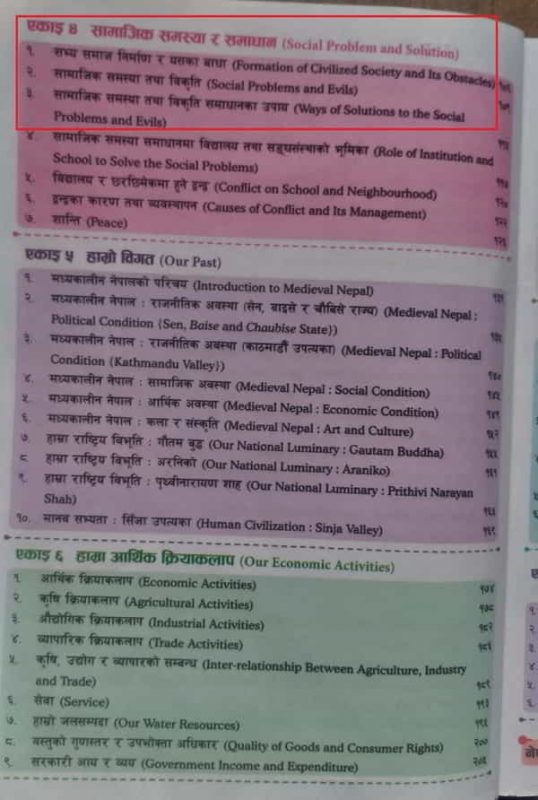
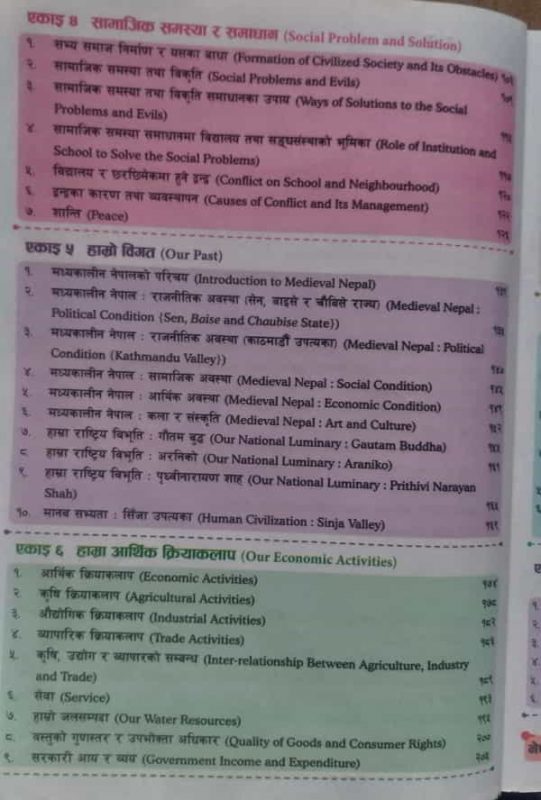
After all, Unit 4 was about “Social Problems and Solutions,” and the first three lessons were “1. Formation of Civilized Society and its Obstacles”; “2. Social Problems and Evils”; and “3. Ways of Solutions [sic] to the Social Problems and Evils.”
Flipping over to the beginning of Unit 4 I was greeted with “Learning Objectives” (see images below).
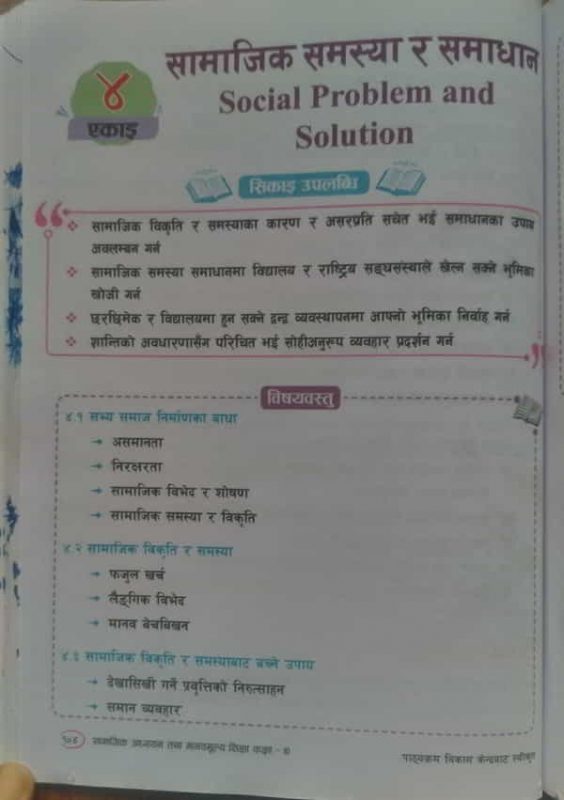
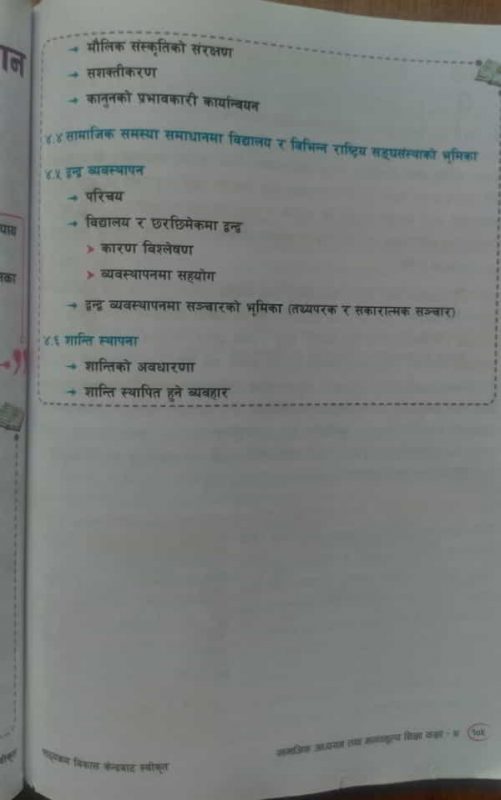
There was NO mention of caste nor the caste system.
Undaunted, I flipped over to “Lesson 1. Formation of Civilized Society and its Obstacles” (see image below for the first page).
The contents of the lesson spanned just three pages. “Lesson 1” was a three-page stimulus with content in the first two and practice questions in the third. At the bottom of the first page, under the section “Obstacles of [sic] Civilized Society Formation,” underlined in red in the image below, was this: “What are the obstacles to the creation of a civilized society? Some obstacles are listed below.”
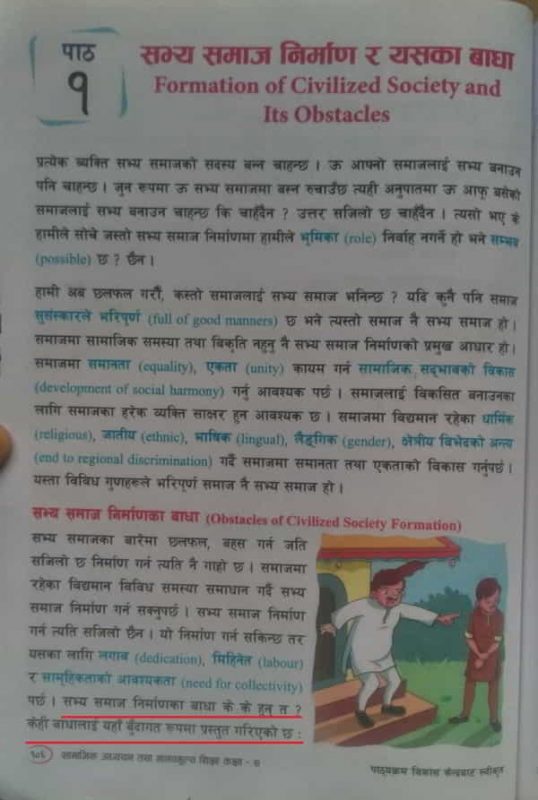
The second page had the list and explications of the “obstacles” (see image below). According to the Grade 7 Social Studies curriculum, there appears to be only four (major?) “obstacles” to “the formation of a civilized society.” And they are “1. Inequality”, “2. Illiteracy”, “3. Social Discrimination and Exploitation”, and “4. Social Problems and Evils”.
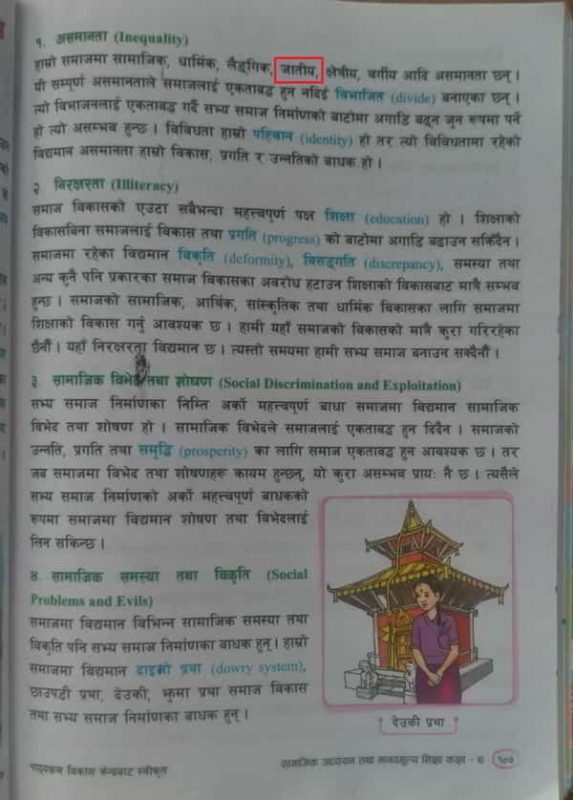
Under “Inequality,” the stimulus stated, “In our society, we have social, religious, gender-based, caste-based [within red box], regional, class-based inequality.” Except, that was the first and the last reference to caste in the whole page. As strange as it may sound, caste, the caste system, and caste-based discrimination got NO mention neither under “Social Discrimination and Exploitation” nor under “Social Problems and Evils.”
Still undaunted, I flipped over to “Lesson 2. Social Problems and Evils”. The stimulus was four pages long, including the practice questions. (See below for the first three.) “Social Problems and Evils,” according to the Grade Seven Social Studies curriculum were, “1. Extravagant [sic]”, “2. Gender Discrimination”, and “3. Human Trafficking.”
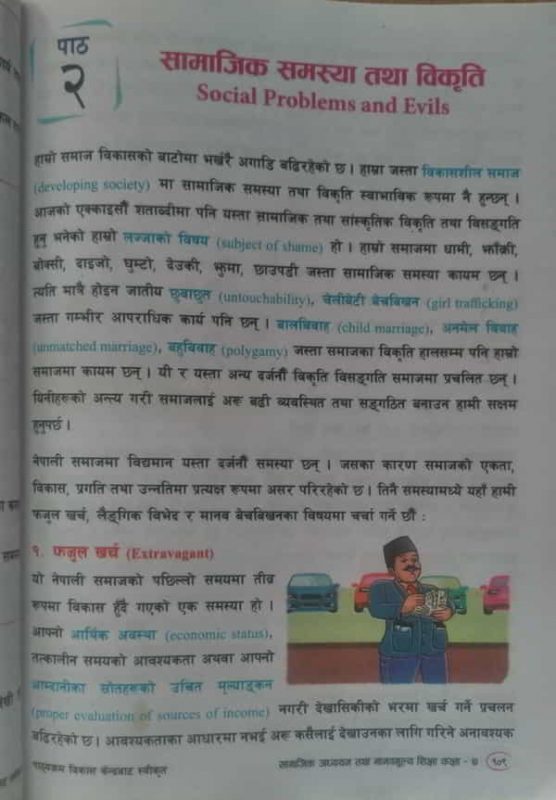
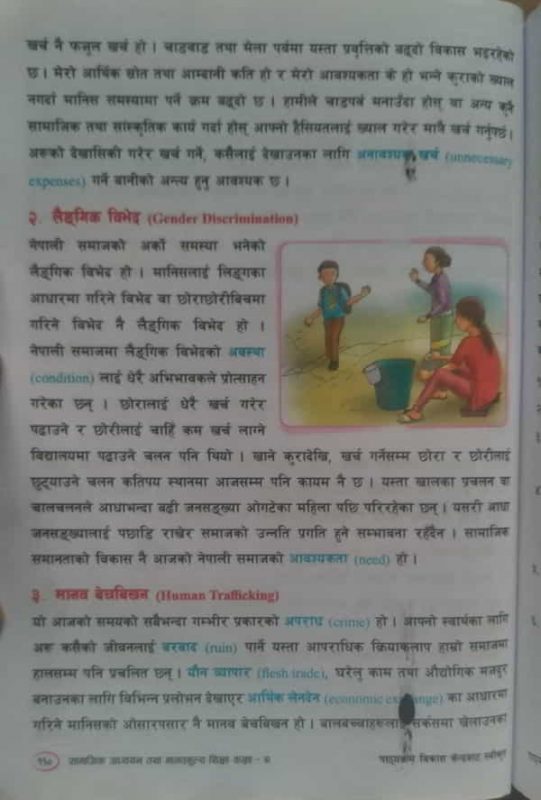
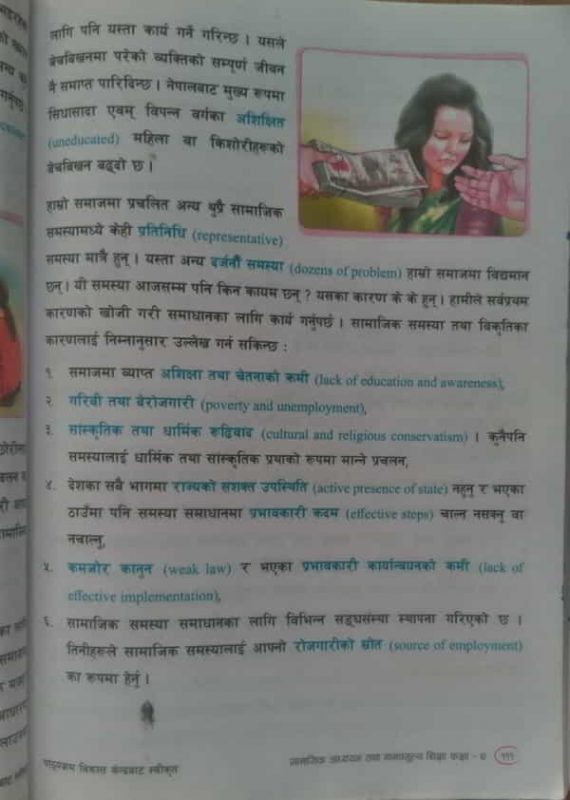
Again, there was NO mention or reference to caste, the caste system, nor caste-based discrimination.
Naturally, I wondered WHY! Going in search of the answer, I found it in the stimulus “Lesson 3. Ways of Solutions to the Social Problems and Evils.” See the underlined bit in the bottom paragraph.
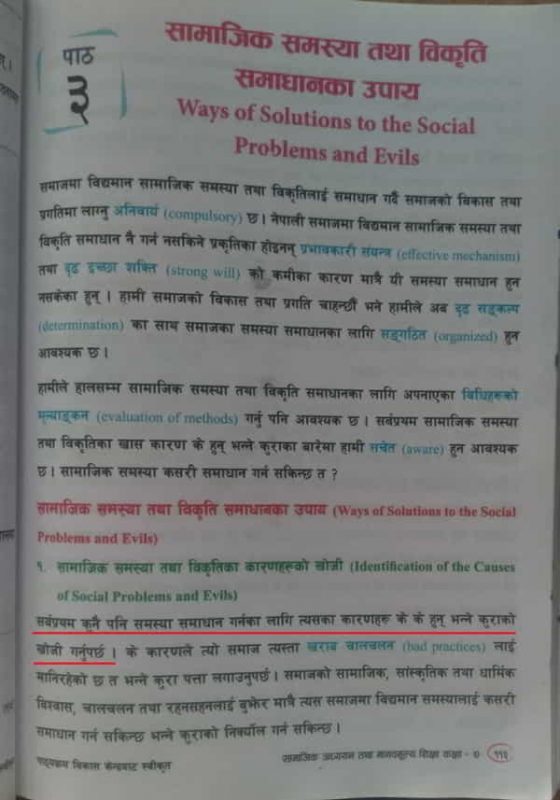
The sentence reads, “To solve any issue, first and foremost, one must identify the reasons behind the problem.” In reality, of course, to address or solve any social problem, first and foremost one must ACKNOWLEDGE its existence!
Given that they have NOT even identified and acknowledged the caste system as a major social ill, the need to find the reasons behind it being so AND addressing it was obviated! How convenient!
The rest of the Unit, which consisted of four more “Lessons” made NO reference to caste nor the caste system.
All that was reinforced in “Lesson 3. Social Harmony: Nepal a Beautiful Garden” of Grade Eight Social Studies textbook. The relevant stimulus appears on page 57 and consists of three paragraphs. The first paragraph ends with the following:
“The most beautiful feature of our country is unity in diversity.”
The last few sentences in the second paragraph declares,
“[t[he people from all the regions get support, love and respect from each other regardless of their origin. Evernthough [sic], Nepal is a multi ligual multi religion [sic] and multicultural country where there are no differences existing between the religions, caste and cultures. We believe in social harmony. There are bigger issues to be dealt with in today’s world compared to the small issues regarding religion and caste.
“We respect each other and live in harmony.”
So, while the Grade Seven textbook gets around not including anything substantial about caste and the caste system by starting with a WRONG premise about social ills and their solutions, the Grade Eight Social Studies textbook does a lot of verbal acrobatics to get around educating the students about caste and the caste system. (Doing some research of my own, I discovered that the above are likely reproduction of texts in the constitution.)
Let’s take a step back and revisit the purposes behind education, more specifically the second one I identified, namely to educate students on or raise awareness in students about a range of different subjects and topics. The basic psychological reason behind raising awareness or imparting (or acquiring) knowledge and understanding about subjects or topics such as the caste system is that doing so instills a certain attitude which in turn, over time, produces a certain behavior.
When it comes to thorny subjects, in order to educate a population about it and set the stage, as it were, to tackle it head on –purposefully, deliberately and earnestly — according to basic psychology, one must, first and foremost, ACKNOWLEDGE it for what it is. If Nepali education system wants to educate the population about the caste system — and, untimately, instill the targeted behaviors in the population — it must first acknowledge it for the major social ill it is, arising, as it did, from the country’s long casteist history.
During Rana oligarchy, the law of the land was based on caste. The Constituion , the “Law of the Land” defined many of the crimes as not only based on the caste identity of the criminal offender but also had provision for differential punishments based on caste: lightest for the hill so-called high caste Hindus and heaviest for the Dalits, the so-called lowest caste. The constitution enacted in 1854 remained the law for over a century, until 1963, when it was REVISED. Nepali society is still suffering from the far-reaching and deeply entrenched social, economic, and political legacies of that caste-based laws as well as from the social norms and protocols, ideas, practices, and behaviors it and prior centuries-old casteist beliefs and practices instilled and engendered.
Sadly, Grade Seven Social Studies textbook does NOT even identify acknowledgment as the pre-requisite for tackling a social ill. The Grade Eight textbook is worse. It DENIES its existence by painting a wholly rosy but inaccurate picture of Nepali society and, in the process, gaslights those who suffer personally, socially, economically, and politically because of it.
Given that textbooks gaslight, you might not be surprised to learn that gaslighting is something many in Nepal do — from ordinary citizens to those in positions of power and influence to institutions to even the government. Prominent are the lies — disinformation and misinformation — and denials peddled in the country most recently during the unprecedented coronavirus pandemic, including by the the Prime Minister himself and others in the government, for example. As for gaslighting about caste, in 2006, the government declared Nepal “untouchability and discrimination free country” but just five years later enacted laws criminalizing caste-based discrimination. If the country is free from discrimination, why would it need laws to criminalize it?! Of course, the country wasn’t free of discrimination, definitely not caste-based discrimination.
In fact, from the summer of 2018 to January 2024, I documented on X (Twitter) instances of crimes and violence committed in the name of caste mainly against Dalits, the lowest caste. My blog post So You Think There is No Caste-based Discrimination in Nepal? Think Again! reproduces those tweets. That long log consists ONLY of that which I came across in the mainstream media AND shared during that period. What percentage of the caste-based violence and crimes are reported by Nepali media? We’ll likely never know. The media, after all, is mostly by, of, and for the hill so-called high caste Hindu men.
In May 2020, during the coronavirus pandemic no less, a mob of 50-60 villagers lynched a young man and a group of his friends in broad daylight for daring to love someone from their village. Reason? He was from a different caste, a Dalit. The mainstream media reported on the heinous crime for just a month, for example.
Caste-based discrimination is so entrenched that not only do individuals suffer DAILY in the name of caste in Nepal, the country ALSO suffers from widespread institutional, systemic, and structural casteism. What percentage of the so-called educated Nepalis (would) even understand what institutional, systemic, and structural casteism are, forget about a significant percentage being aware or knowledgeable about it? Where is the education about that? I don’t know this for a fact but the two Social Studies school textbooks are likely the ONLY ones that even mention caste.
My sense is that informal education system is even worse when it comes to acknowledging the existence of the caste system and the major problem it is. I would be mightily impressed if a significant percentage of parents have conversations about caste and the caste system with their children, for example.
So, given all that, why would a school curriculum in Federal Republic of Nepal still sound like propaganda straight out of the Shah autocratic days? One of the main reasons is that the system of government in Nepal may have changed but those in power are still the same: hill so-called high caste Hindu men, a people who are still interested in controlling and manipulating the population for power and money.
Consequently, there isn’t a dearth of Nepalis, both with and without academic qualifications, who live in denial of the caste system (and other thorny and uncomfortable truths about their society). Many struggle to acknowledge or admit or identify, forget call out, not just caste as being wrong but also many other wrongs and mistakes as “wrong” or “a mistake” in general. It is no wonder that putting on a façade and generally living a life of pretense is so widespread among Nepalis.
As if all that wasn’t bad enough, denial about caste is also supplanted by the society making talking about it a taboo as well as associating stigma with it along with many other things.
Therefore, for that and many other reasons, both the formal and informal education systems in Nepal, far from being the catalyst for change and progress, as far as I am concerned, continue to be hurdles to progress.
Let me end with two things. The first is something from the writer James Baldwin.
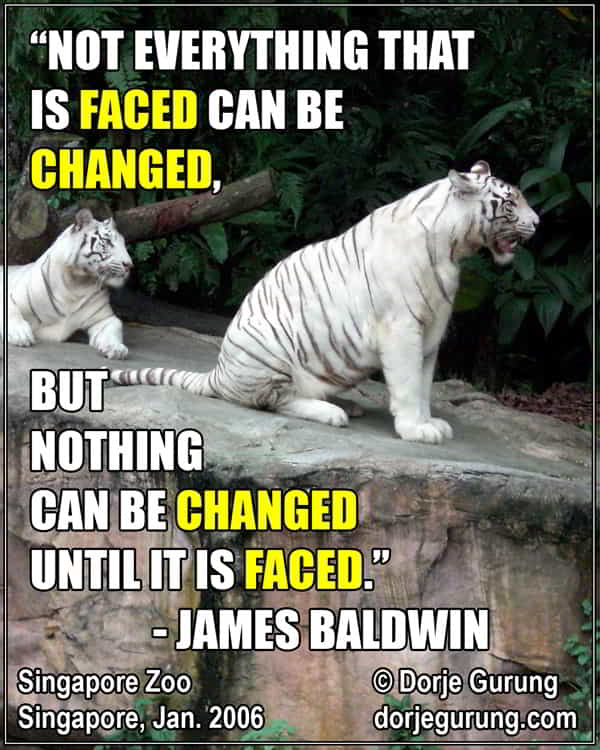
The second is a curiosity. How do Nepalis intellectually reconcile the following: 1. not acknowledging caste and/or caste system as a major social ill; 2. denying the existence of caste and caste system as a major social ill; 3. treating caste as taboo; and 4. stigma being associated with caste.
My sense is that they probably can’t. In fact, partly because there are a multiple times more uneducated than educated and the education system is so poor, a vast majority of the population are probably lost and confused about caste (as well as about many other issues) but don’t care, or don’t care enough to have even realized that they are…lost and confused. The education system does NOT teach critical thinking skills after all. How can one think straight when you can’t think critically?!
What do YOU think?
(This blog post was partially adapted from a Twitter thread I shared in September 2023.)
References
- One of the MANY legacies of the LONG casteist history of the country, fraught with institutional, systemic, and structural discrimination is that all three branches of the government of Federal Republic of Nepal are still monopolized by the hill so-called high caste Hindu men. Click here and here for more.
- If interested in more blogs about caste, caste system, casteism and related topics click here for a long list.
